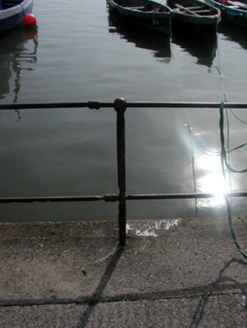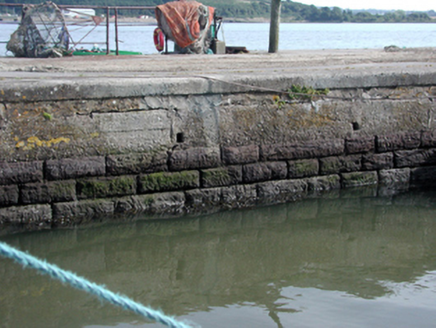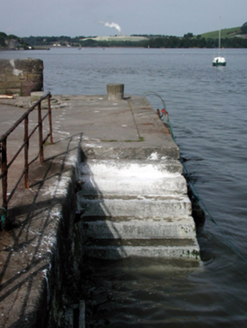Survey Data
Reg No
22901008
Rating
Regional
Categories of Special Interest
Architectural, Historical, Social, Technical
Original Use
Pier/jetty
In Use As
Pier/jetty
Date
1880 - 1890
Coordinates
268581, 113839
Date Recorded
15/08/2003
Date Updated
--/--/--
Description
Pier, built 1884-6, on an L-shaped plan with mass concrete battered walls on rock faced "Old Red Sandstone" ashlar battered base on submerged concrete block foundations having lichen-spotted rounded coping supporting mooring posts. "Repaired", 1902. Set extending into River Suir.
Appraisal
A pier erected by the Yorkshire-born contractor Thomas Ingham Dixon (----) of Donnybrook to designs by Robert Manning (1816-97), Chief Engineer to the Board of Public Works (appointed 1874; retired 1891; NA OPW 1884-6 8/78), representing an important component of the late nineteenth-century built heritage of County Waterford with the engineering or technical dexterity of the composition confirmed by the mass concrete construction which, unlike the contemporary Carnsore Pier (1884-5) by Manning and Dixon in neighbouring County Wexford (see 15705317), was given a rock faced finish as 'given the pre-existing stone pier…it appears [they] took the decision to temper the difference between the original work and the extension through the use of stone facing' (Shotton 2018 II, 1191). NOTE: The pier was the scene of a landing of arms during the War of Independence (1919-21). A landing by a boat named "Anita" was scheduled to take place in April 1921 but the cargo was intercepted and the captain, Charlie John "Nomad" McGuinness (1893-1947), arrested and fined. Undeterred, Captain McGuinness subsequently steered a second cargo in a tug named "Frieda" and, avoiding interception but hampered by fog, bypassed the scheduled landing point, Helvick, and successfully unloaded the consignment of Mauser rifles and "Peter the Painter" pistols at Cheekpoint in November 1921 from where they were transported to the Comeragh Mountains for safe keeping.







